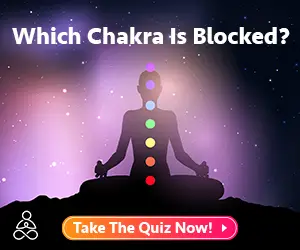General meditation has over the years gone from something associated with religion to a fad and is now mainstream and scientifically accepted as an essential part of personal care. Different studies have shown that regular meditation has profound effects on the health and well-being of an individual.
These benefits include psychological benefits, physical benefits, and spiritual benefits. Beyond the mind, body and soul benefits, candle meditation also helps in learning and coping with environmental pressures while improving workplace productivity.
There are different types of meditation based on props and techniques used. One of the most popular and effective types is candlelight meditation. It has proven to be quite useful, especially for beginners in meditation.
What is Candle meditation?
Candle meditation originates from Hatha Yoga where it is known as Trataka and serves as one of the six techniques used for purification. Trataka is a Sanskrit word whose translation is “to gaze” or “to look” and explains the basis of candle meditation. A Hatha Yoga handbook describes it as focusing your sight on a small point until your eyes shed tears.
Therefore meditation works by concentrating on a single point of focus which could be a tiny dot, a rising sun or moon, a mountain, an object of worship or a flame like that from a candle. The last option has been found to work best, and it offers a lot of flexibility and convenience.
Candle meditation works based on how the eyes send signals to the brain for processing. You are only able to see because the eyes keep sending the brain signals that are processed and decoded.

Continued focus on the candlelight means new information is not being passed on. So the information flow to the brain slows down, and all other distractions fade off heightening your focus and awareness on the candle.
Eventually, you become fully absorbed into the flame and attain total relaxation, and you can effectively meditate. Achieving this state allows you to examine and look at the past, present, and future with great clarity.
It is believed that the practice of candle meditation will enable one to open their third eye also known as Ajna chakra which allows one to develop better intuition and gain wisdom. It is also believed that it can offer psychic abilities. Presently though, candle lighting meditation is popular for its ease and purification effect. It also helps better reflection due to increased concentration.

Benefits of candle meditation
Besides the general usefulness of meditation, Trataka offers several other advantages which include;
1. Improving your concentration and focus
The light and warmth coming from the candle flame make it easier for you to keep your attention on its tip for longer than you would have done in the absence of such a focal point.
As a result, your concentration is higher and continuous practice develops your ability to stay focused on one single area or item. Such ability helps you have more meaningful and effective meditation but also carries on to other areas of your life.
You can increase your productivity by staying focused on one thing and closing out all other distractions. Developing mono-focus can prove useful in your family and home life as well as in your professional life.
2. It cleans up your etheric body
It is not for nothing that this kind of meditation makes up one of the cleansing elements in Hatha Yoga. It provides cleansing for the eyes. The tears shed from the fixed gaze help remove any dirt or objects present in the eyes.
Regular practice leads to further purification and even management of some eye conditions. Beyond physical cleansing, trataka is also regarded as yoga for the eyes and the ethereal body which results in a more in-depth development of clarity and intuition making it easy to see issues in a new light and find solutions to them. (Further reading: Make More Effective Decisions by Using Your Intuition)
3. Revitalizes the body
The relaxation achieved during candlelight meditation allows your body to rest and eases the tension mentally and across all the muscles. This rest provides the body an opportunity to rejuvenate itself, and when you come out of the meditation, you are refreshed.
While the rejuvenation effect is common to all kinds of meditation techniques, the use of candle meditation goes one step further.
The clarity and vision acquired in different aspects of your life give you a new sense of purpose and boosts your self-confidence. Having new insights enables you to overcome doubts and indecisiveness which eat away at your mental and physical energy.
With fresh vigor and determination, it becomes easier to attain success and also go through the hard times without losing your focus and confidence.
4. It helps you achieve intense calmness and a more profound sense of inner peace
Another benefit of candlelight meditation is the way it enables you to calm your thoughts and emotions and derive a deeper understanding of inner peace from the deep focus. Naturally, candles have a calming and soothing effect which explains their use in massage parlors, dining areas, and even in sacred places.
These relaxing properties are what lead you to a deep meditative level and help you release thoughts and their accompanying stress from your mind as your ebb towards a settled state where the waters of your mind ebb to a calm and still.
The worries and turbulent thoughts and emotions fall off, and you have transcendent peace. With regular practice, you can quickly be achieving this state or call to it when you are unsettled or having mental turmoil.
5. Helps improve your eyesight and vision
The Hatha Yoga handbook earlier mentioned goes on to further explain the benefits of trakata to the eyes’ health. According to the manual, this meditation technique helps relieve eye fatigue, sloth and also blocks the doorways to eye problems and diseases. (Further reading: Yoga Meditation for Beginners)
It also cleanses the cerebral cortex and provides exercise to the eye muscles. You may never have realized it, but eye muscles do need exercise to maintain their vitality and prevent diseases.
Related reading: 8 Health Benefits of Meditation – What the Newest Research Shows
6. It helps develop your willpower and self-discipline
Undertaking regular candle meditation will require you to have self-discipline. You will have to set time aside for yourself and make all the necessary arrangements and then adhere to your schedule.
On the other hand, you are going to need to be patient with yourself and also push yourself to the limits as you learn to hold your focus to the candle longer each time you get to practice the technique.
It is not going to be comfortable and straightforward as it seems at first, however, in time you will be able to focus for longer and your mediation period will thus be longer.
The whole process builds up your willpower and tolerance muscles. You can apply this elsewhere in your life where the right action may be uncomfortable to undertake.
The tolerance and perseverance learned on the other hand help you to be able to go through unfavorable situations you may not have the power to change immediately.
Read also our article: Warnings about Meditation (Precautions and Negative Side Effects). – Opens in new tab
7. It helps you manage and overcome psychological, emotional, and even behavioral challenges
From all the above, it is evident that candlelight meditation can have a strong positive impact on several problems you could be facing across various spheres of your life.
For example, behavior such as procrastination can have adverse effects on your life, but the willpower and discipline you build during meditation help you overcome it.
Mental problems like depression, anxiety, and even insomnia can be relieved and overcome through the calming influence of this meditation technique. Further emotional problems from anger to grief and disappointment can also be overcome.
The way the technique works is like a sieve in that, the longer and sharper your focus becomes the more the turmoil is moved to the periphery. All source of strife then falls off once you have new insights and calm in your mind and soul.
Do you want to learn more about Meditation? Check out our recommendations at “Meditation Bookshelf” and many free resources at our “Free MeditationLibrary“ – Opens in new tab

How it is done
The benefits of candle meditation mentioned are among the many you can enjoy but only if you do the technique correctly. Here are several tips and guidelines on the right way to do trataka correctly. The first step is determining the time you will be doing it.
This kind of medication relies on the effectiveness of candlelight as a focal point so it will not be beneficial to do it when the sun is bright outside. It is, therefore, most effective when practiced first thing in the morning or the last one in the evening just before you sleep.
1. Choosing the candle for use
Once you know your time, the next step is picking the kind of candle you will use for meditation. First, you want to use a non-toxic type of candle so that you will not be inhaling poisonous fumes that will affect your concentration and focus and also cause several health risks.
Avoid candles made with paraffin and similar chemicals instead use candles made from non-toxic substances like soy or bee wax.
Choosing a candle goes beyond toxicity.
You also have to decide the scents and colors. Some people find scented candles more effective at relaxation while others may have an allergic reaction to the smells. If you are going for scents some of the best ones to try out include jasmine, lavender, peppermint, cinnamon, pine, and vanilla.
There is a massive belief that the color of the candle will enhance your experience since you will be looking at it. It means you will most likely achieve the meditation effect closely associated with the color of the candle.
Here is an overview of the different color associations
- Green – fertility, forgiveness and compassion, healing, hope, and freedom
- White – purity, clarity, simplicity, wholeness or completion, innocence
- Gold – wealth, spirituality, abundance
- Blue – trust, creativity, communication
- Yellow – self-respect, esteem, discipline, ambition, courage
- Red – vitality, love, courage, family bonds, strength
- Violet – reverence, commitment, higher power
- Turquoise – healing, protection, and independence
- Orange – sexual energy, sensuality, friendship, happiness, and optimism
- Pink – love, loyalty, and empathy
- Indigo – clarity, imagination, wisdom
Colors can share qualities, and their associations largely depend on culture.
2. Create a relaxing environment
Get a room that is quiet and where you will not be disturbed for the duration of your meditation. To make the candle more effective, dim the lights and pull the curtains or window shades.
Remove any existing distractions in the room that may interfere with your focus on the lit candle and also switch off any gadgets like your phone. Finally, be sure to have worn comfortable clothes and shoes to avoid distraction from discomfort. During meditation, it is better to use loose-fitting clothes.
3. The right position for the candle during meditation
The candle should be positioned at eye-level or just below eye-level to ensure you do not strain both looking up or below and even having to bend your back. Have it located 50 to 90cm from you at a most comfortable distance for you. Having it closer will make it too bright and a distraction to you.

4. Position yourself comfortably
You should sit comfortably in a position you will not fidget much. You can take the full lotus position or any of its variants or sit on a chair while straightening your back and feet firmly placed on the floor. However, your hands should be relaxed on your laps.
5. Focus on the flame
Focus on the candle flame and let it fill your mind. Your eyes may begin to shed tears, but it will fade after a while. However, only do it for as long as it is naturally comfortable for you, especially during the first session.
6. Begin your meditation
As your focus on the flame grows, start breathing in a slow pattern through your nose but with long inhaling and exhaling. Take in every aspect of the flame to help empty thoughts from your mind. Allow yourself to be lost in the flame and every time your mind wanders, acknowledge the thoughts but bring your mind back to the flame.
Related reading: New to Meditation? Here are the Major Mistakes you can make
This way, you will be able to achieve full focus and relaxation. After five minutes you can close your eyes and focus on the spot between your eyes. You should be able to see a replica of the flame there.
If not, open your eyes and focus more on the candle flame and try again until you can be able to see a flame when you close your eyes. The next sessions should be focused on increasing its size.
7. Leaving the meditation
Once you are done open your eyes, and relive the experience as you ease back. Keep note of your achievements and seek to improve on them next time.
Safety Precautions
Candles can be quite dangerous when not attended to, and this attribute led to the National Candle Association developing some safety guidelines when using them even in meditation. These include;
- The candles should be physically near you when they are burning
- They should not be used near anything that may catch fire
- Keep pets and children away from burning candle
- They should not be used in areas with heavy air currents
- A candle snuffer should be used to put them out and before leaving the wick should not be glowing
- They should not be burnt all the way to their ends
- The room should have good ventilation
- Candles should be placed in sturdy glass or metal candle holders
- A candle that burns too high or hot and flickers or smokes should be extinguished.
With all these tips and guidelines, you should be able to enjoy the benefits of candlelight. It is time you tried out this meditation technique.
♦Further reading: How to Focus on the Breath in Six Easy Steps
Stay in Touch
 Join our newsletter by using the forms on this website or click here!
Join our newsletter by using the forms on this website or click here! Follow us on Google News
Follow us on Google News Follow us on Facebook
Follow us on Facebook
Featured Image By Pxhere.com
Do you want to learn more about Meditation? Check out our recommendations at “Meditation Bookshelf” and many free resources at our “Free MeditationLibrary“ – Opens in new tab








